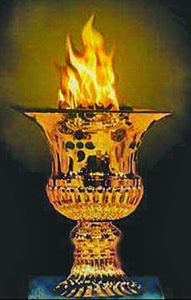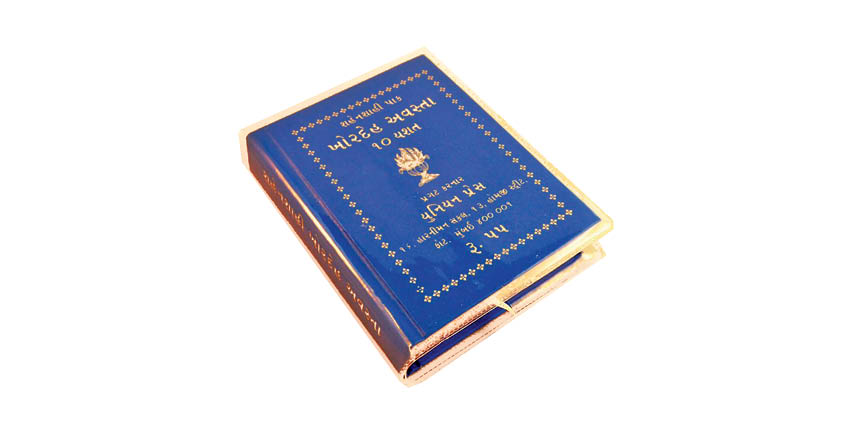
Recently I had an opportunity to interact with a few young Zoroastrians who had a number of questions regarding our mode of offering worship, especially at an Agyari or Atash Bahram. This led me to believe that many others may also have similar questions in their mind, which I would like to share with you along with the answers for your knowledge…
Are Zoroastrians Fire-Worshippers?
According to legend, fire was discovered during prehistoric times by Shah Hooshang. While elaborating this episode, Firdausi Toosi states in the Shah-nameh (the Book of Kings), “Ma gui ke ātash parastā budand, Parastande-e pāk yazdān budand,” which translated means, “Do not call them Fire-Worshippers – they are worshippers of God through Fire.”
Indeed, therefore, when a Zoroastrian reveres or prays before fire, he/she in essence, offers worship to Ahura Mazda through Fire. From the Zoroastrian perspective, fire is both – the giver of light and giver of life. Fire is the closest that we come to understanding the Divine. It is energy, it is light, it is warmth and it is life giving.
Neither darkness nor evil has an existence of its own. Just as darkness is merely the absence of light, so is evil the absence of good.
Why Are Non-Faith Members Disallowed?
Why entry inside an Agyari or Atash Bahram is restricted to Parsi Zoroastrians only is a fairly common question. The reasons are many… To begin with, an Agyari or Atash Bahram is a consecrated sacred space and all such places have their own rules and regulations in order to maintain ritual sanctity. Also, Parsi Zoroastrians are not the only religious community to restrict entry to their places of religious worship. For example, only a Muslim may enter the Holy city of Mecca. Among Hindus, non-faith members are not allowed to enter the Jagannath temple at Puri. Even the Prime Minister of India, Mrs. Indira Gandhi was refused entry (that too at the peak of her political power) only because she was married to a Parsi. There are at least eight other Hindu temples in India where non-Hindus are disallowed.
To Stand Or To Sit?
Should we stand or remain seated during the Boi ceremony is yet another frequently asked question. As we are aware, during the Boi ceremony, evil is ritually driven away and this leads some devotees to think that if one stands up at the toll of the bell, it would tantamount to paying respect to the forces of evil!
The Boi ceremony is performed by ordained Zoroastrian priests in each of the five Geh or watch of a day of twenty four hours. The Persian term for the ceremony is Bui daadan which means to ritually offer ‘fragrance’. Whether a devotee should sit or stand during this ceremony is not stated in any known Zoroastrian text. However, as part of ritual tradition, priests always stand up while offering the Atash Niyaish, which is a litany to the fire. Hence, if the devotee is praying the Atash Niyaish at the time of the Boi ceremony, he or she should ideally be standing.
During the Boi ceremony the priest rings the bell while reciting the words, “Dushmata, Duzhukhta, Duzhvarshta”, which means “bad thoughts, bad words and bad deeds”, leading some super-imaginative minds to conclude that if one stands up at that moment, it implies paying respect to evil. A fire temple is a consecrated place of worship and the object of reverence is the Holy Fire. Where is the question of any evil force being present at such a sacred, purified and consecrated place of worship?
With the ringing of the bell, the priest symbolically and ritually drives away the forces of evil (all bad thoughts, bad words and bad deeds) and if one decides to stand up, it does not mean the devotee is offering respect to evil. The act of standing up is an act of respect to the Holy Fire through which the forces of evil are being driven out of this world.
Why Cover The head?
There are certain rules to be followed when one visits a holy place. Various etiquettes must be observed, one of which is to cover the heads while worshiping. Accordingly, men are required to wear a skull cap while women are required to wear a head scarf when inside an Agyari or Atash Bahram.
Hindu women also cover their head in their temples as a mark of respect, gratitude, and humility towards the deity they worship. In the early years of Christianity, men and women were required to cover their heads while entering their place of worship. Later, it was only mandated for women. While this tradition of covering the head inside a Church has faded away with time, some still observe it, especially on ceremonial occasions. Sikhism also requires that both men and women should cover their heads when they enter the Gurudwara.
In the Zoroastrian tradition, hair is seen as naso or dead matter. Hence, all Zoroastrians are required to cover their heads, especially while praying or attending a religious ceremony or while inside an Agyari or Atash Bahram. It is believed that hair that falls off renders the surrounding ritually impure.
As we know, even in good restaurants, chefs and kitchen staff keep their heads covered to prevent any hair from slipping into the food. Surgeons and nurses in hospitals and particularly the operation theatre, also cover their heads for the same reason – medical hygiene!
Also, covering the head is a mark of respect – be it in the presence of an elder or the Holy Fire – displaying reverence.
| I look forward to other queries you may have. Do mail in your questions for which you seek answers, at editor@parsi-times.com |
- Celebrating Women And Equality - 8 March2025
- How The Greeks Viewed Ancient Persians - 1 March2025
- Moon And Moods - 22 February2025
